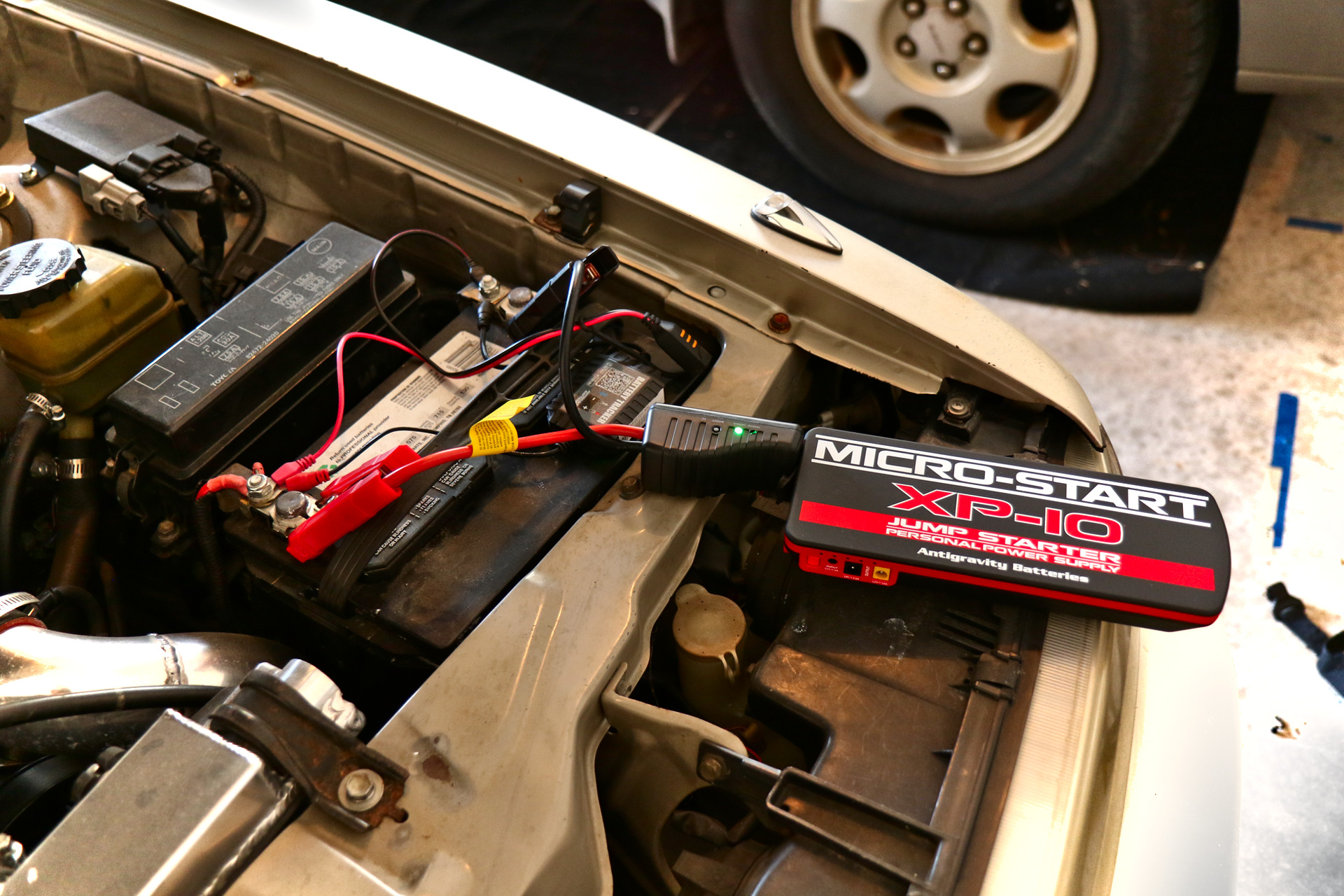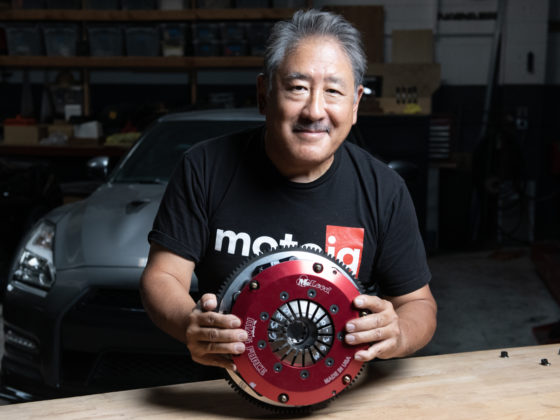
It’s been quite a few years since we tested the DBPOWER jump box. Battery technology continues to advance, and Antigravity has come onto the scene strongly with their feature-packed lithium automotive batteries. They also play in the jump starter game, so we decided to move the old one to shelf duty and rotate in a new XP-10 MICRO-START.

It has a long story, and, like all my car stories, it is annoying and frustrating. Like all my cars, it, too, has a nickname: Budget. Namely, because I gave a shop a budget, and they chose to ignore it completely. This story is extra sad because the car was nice when I first bought it, but ten years parked in a field (not kidding) didn’t do the interior any favors. These things are hard to find parts for. Restoring this one isn’t cost-effective considering excellent condition, whole, running examples are still found in Japan. But I’m getting away from the point of this article.
Because this car makes me sad and needs work, it spends most of its life sitting. We’ll return to it soon.

In addition to the standard wall charger, you also have a 12V DC car charger. That might seem funny at first because if your car is dead and needs a jump, you can’t charge the jump box from the car. But you are a competent and prepared person, so you kept the XP-10 charged, and you’ll use the 12V adapter to re-charge it after you jump your dead car! Duh.

Antigravity Batteries provides an array of cylindrical DC adapters to fit a range of devices if you happen to have any that use this type of connection. There is both a 12V and a 19V port, depending on what you need. The wall charger or 12V charger plug in here as well.
When you tap the power switch, the status indicators will light up to show the charge status. Right out of the packaging, the XP-10 MICRO START was already at 80% charge, which was both curious and remarkable.




9 comments
I recently bought a lithium battery jump start pack from a different brand, and man! Why did I wait so long to own one of these? So convenient, compact, and perfectly purpose built. No longer do I have to carry the bulky bundle of jumper cables.
I don’t know that I’d forever get rid of jumper cables. They have other uses. But, yes, this thing will definitely get you out of a jam!
This makes me wonder if you can install a undersized battery into a dedicated racecar and start it with the Lithium battery. Assuming the car is trailered to the track, of course.
Yes and No on the undersized battery question. If you are running an efficient system without a ton of power draw, Yes it can work. The No is that very undersized batteries do not have the capacity in some case you may want it, like if your alternator fails.
Most times we recommend a true 40AH lithium automotive batteries for race cars that are running electric power steering , chill out systems and higher draw electronics.
To back up what Bart (who works for Antigravity) says with another tidbit — do you really want to use a jump-box every time you start the car? Also, what happens if you spin the car on the track and end up stalling it? You wouldn’t be able to re-start it. Or what if you are in a race with a standing start and stall?
There’s CCA (cranking amps) and then total storage capacity in amp-hours. You likely want at least a few starts worth of storage capacity with sufficient CCA to actually turn over your motor.
Drag racing cars often don’t use an alternator but run a big enough battery to be able to start the car several times and run all the electronics for the duration of the pass. However, I’d be hesitant to run a setup where I might not be able to re-start the car if I really needed to.
Well, technically, this is how F1 racecars are started on the track. They don’t have a starter motor, and the engine is cranked by an external device. I admit that this is pretty drastic, but it does save an absolute ton of weight that you don’t need on a track and gives you and advantage that other cars may not have (do to convenience.)
“In Formula 1, each 10 kg slows the car down roughly 0.4% (around 0.3 seconds a lap on a normal track).”
If you stall the car, you probably screwed your laptime anyway, so it’s a bit of a moot point. If you are serious about winning, then you have to go the extra mile and ditch convenience.
Personally, I remove windshield wipers and their motors during good weather, before I track my car. So, I am all about paring down a race car to the bare essentials.
The question is, how much can you pare a car down before it becomes a nightmare to race on a track?
That was long time ago. Formula 1 cars (since 2014) can start on they own – they have batteries and electric motors to turn the engine. Nowadays they also have rear gear too 😀
I’ve been using a lithium jumper for years, and just recently got a Re-Start battery for my bike. Antigravity has a BMS that disconnects the battery when the voltage drops, and leaves enough power to start the vehicle. Really neat technology.
The BMS would’ve saved my butt several times, for sure.